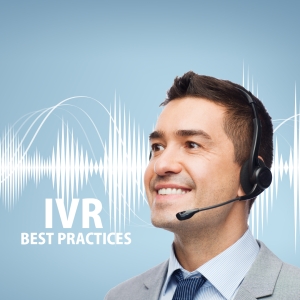Troubleshoot and Optimize Your Multi-Level IVR SystemPosted by Vitel Global on December 20th, 2023  Welcome to our blog post on troubleshooting and optimizing your Multi-Level IVR system, where we dive into the world of Interactive Voice Response technology. Whether you're a business owner or a customer service professional, you know just how crucial it is to have an efficient and seamless IVR system in place. In this article, we unravel common challenges faced by organizations when dealing with their Multi-Level IVRs and provide practical tips to refine your setup for maximum effectiveness. So let's get ready to elevate your caller experience and streamline your operations with these invaluable insights! Introduction to Multi-Level IVR Systems An IVR system is a telephone system that allows callers to interact with a computerized voice to obtain information or perform certain tasks. A multi-level IVR system is an IVR system with multiple levels or menus that the caller can navigate through using touch tones or voice commands. Multi-level IVR systems are commonly used by businesses to route calls to the appropriate department or individual. For example, a caller might be prompted to press 1 for sales, 2 for customer service, 3 for accounting, etc. Each subsequent menu might offer additional options until the caller is finally connected to the desired party. Multi-level IVR systems can be very complex, and it is not uncommon for them to have dozens of menus and thousands of possible paths that a caller can take. As such, it is important to carefully design and test any multi-level IVR system before deploying it. Otherwise, callers may have difficulty navigating the system or connecting to the desired party, which can lead to frustration and abandoned calls. There are Several Factors to Consider When Designing a Multi-Level IVR System Indeed, designing a Multi-Level Interactive Voice Response (IVR) system requires careful consideration of various factors to ensure an efficient and user-friendly experience. Here are several key factors to consider. User Experience (UX)
Call Flow
Personalization
Integration with Backend Systems
Scalability
Feedback Mechanism:
Multilingual Support:
Troubleshooting Procedures When designing a Multi-Level IVR system, it's crucial to implement effective troubleshooting procedures to identify and resolve issues promptly. Here are some general troubleshooting procedures to consider: Logging and Monitoring
Error Handling and Messages
Testing Environment
Regular Audits
User Feedback
Performance Monitoring
How to Optimize Your System for Better Performance When it comes to troubleshooting and optimizing your Multi-Level IVR system, there are a few key things you can do to ensure better performance. First, make sure that all of your software and hardware is up to date. This includes your operating system, as well as any drivers or other software that may be necessary for running your system. Next, check your system's settings to ensure that everything is configured correctly. If you're still having problems, contact a professional for assistance. Tips to Keep in Mind When Setting Up Your System When you are setting up your Multi-Level IVR system, there are a few things that you need to keep in mind. These tips will help you troubleshoot and optimize your system so that it runs smoothly.
Troubleshooting Resources If you are having trouble with your Multi-Level IVR system, there are a few resources that can help you troubleshoot and optimize it. The first resource is the Multi-Level IVR Troubleshooting Guide. This guide provides step-by-step instructions for troubleshooting common problems with Multi-Level IVR systems. Another resource is the Multi-Level IVR Optimization Guide. This guide provides tips and tricks for optimizing your Multi-Level IVR system. If you are still having problems, you can contact customer support for assistance. Conclusion In this article, we discussed the importance of troubleshooting and optimizing your Multi-Level IVR system. By performing regular maintenance and proper testing procedures, you can ensure that your system is running optimally for maximum efficiency. Additionally, by following all of the steps outlined in this article, you can quickly and easily troubleshoot any errors that may occur within your Multi-Level IVR system. With these tips in mind, you should be able to keep your Multi-Level IVR running smoothly so that it continues to provide efficient customer service for years to come. Like it? Share it!More by this author |


